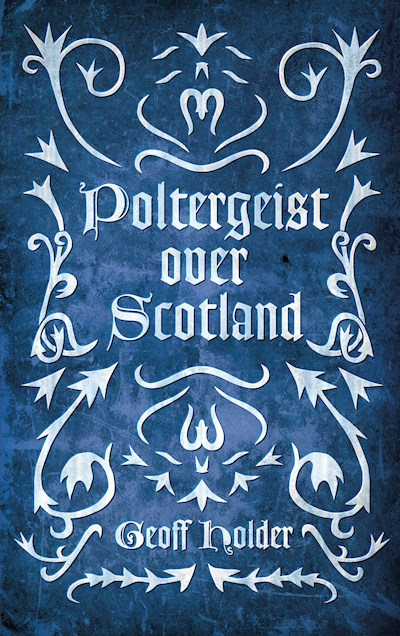
The cases are numbered – there are 134 in total – and arranged chronologically, from the 1630s to early 2012. Each century is assigned a chapter, except the twentieth which, because of the number of cases it contains, has been covered in three. Each chapter is prefaced by a line drawing of Scotland, labelled with the case numbers, so it is easy to see the distribution during that period.
Holder follows a standard format: location; date and duration, where this can be established; a description of alleged phenomena; sources used; the context, which might be the religious, social or physical environment within which the event(s) occurred; and interpretation, both what the participants thought was happening, where this is available, and Holder’s own thoughts.
There is a short introduction on the nature of poltergeists, their relationship with hauntings, and some statistics extracted from his collection on where they manifest. As might be expected, since the Second World War there has been a decline in rural incidents and an increase in urban ones, and the rural ones stand out because of the amount of burning peat that often seems to be involved.
Holder has also broken them down by type of phenomenon into 37 categories, though this is not going to be precise considering the vagueness of some of the reports. Even so, it shows that objects and furniture moved in almost 72% of cases and there were noises in almost 66%, both a long way ahead of other types of phenomena. Clear hoaxing was found in only about 5%, though this is probably an underestimate. The book concludes with a lengthy bibliography and an index.
A lot of work has gone into assessing the reliability of witnesses and comparing versions, and casting quite often complicated accounts into a comprehensible narrative. Some cases are obscure, available only in specialist or antiquarian publications. Others are better known, for example Ballechin House, Pitmilly House, and Sauchie in 1960-1. The section on the Mackenzie poltergeist shows how the story as promoted is inextricably linked to commercial ghost tours and “supernatural branding”, denting its evidential value.
The Maxwell Park case, a kind of proto-Enfield which was investigated in part by the late Archie Roy, turns out not to have been in Maxwell Park in south Glasgow at all, but on the other side of the city at Balornock. Roy said in A Sense of Something Strange (1990) that he had changed the names of those involved (excluding the investigators) but he did not say that Maxwell Park was also a pseudonym. Fortunately Holder has corrected the record, and gives a succinct overview of a complicated case.
Not all of the entries are entirely about Scotland. The ordeal of Scot Carole Compton (“The nanny they called a witch”) is included even though it occurred in Italy. Alexander Seton’s supposedly cursed Egyptian sacrum is also included, and there is a picture of Lady Zeyla Seton holding the bone, though it looks more like a bath sponge than the digestive biscuit her husband described it as resembling. Holder has looked into the business and suggests an identification for the tomb from which it was removed. The Seton affair, and Ardachie Lodge as well, are covered in Paul Adams and Eddie Brazil’s recent Extreme Hauntings, also from The History Press.
Space constraints have limited what can be said, and one gets the impression that Holder has strained the extent of what his publisher would allow in order to cram as much in as possible. It is surprising that the publisher chose a small format for the book, as a larger size, with more illustrations, would have been warranted by the subject matter, even if that entailed increasing the cover price.
There are a few typos scattered through the text, an unfortunate one stating that the unpublished notes on Pitmilly House in the SPR archives at Cambridge were written by family lawyer Gilbert Hole, whereas they were written by SPR investigator Lord Charles Hope. These are minor issues, and overall this is an excellent package relevant to anybody interested in poltergeists, not only those which occurred in Scotland. Holder employs his trademark humour and takes an open-minded, sympathetic, but critical view of the phenomena he describes, making this a useful, and long overdue, collection.
It is interesting to chart the ins and out, the changes and continuities, of the poltergeist’s evolution across the centuries (and Holder’s dataset seems to be typical of reports more generally), to see how embedded it is in the mores of a particular era. Default explanations have ranged from external forces, such as demons and witches, to internal ones in the shape of recurrent spontaneous psychokinesis, though to our current eclecticism, a mix of geophysical, RSPK and survival interpretations on one side, with sceptical explanations subsumed under the umbrella of anomalistic psychology on the other.
Yet despite the plethora of suggestions we seem to be no nearer an explanation for this mystery. In fact an explanation may be receding, given the relentless shift from sober investigation to media sensationalism over the last half-century. It is easy to smile at the supposed naivety of our forebears (demons! witches!), but looking at the more recent entries in Holder’s book, one realises that we should not patronise those who went before, because we might well wonder what those who come after will in turn make of us.

